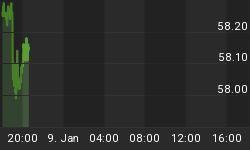Gold prices in January 2013 are trading around $1,650 - $1,675 per ounce. In the free market of opinions about gold, there are any number of people doling out free advice about how low gold prices are compared to what they 'really' ought to be. Gold prices rose from $256 per ounce in 2001 to $1,890 in September 2011 (basis the Comex nearby active futures settlement prices), before backing off to around $1,500 a few times over the past 15 months. Investors, faced with the reality that gold prices, even off from their peak two years ago, still are around six times higher than they were a decade ago, are questioning whether gold prices will continue to rise.
The spurious logic and hyperbolic rhetoric that surrounds many of the prognostications of gold at $2,000 or any number of extremely high figures does not help convince reasonable investors to expect prices to continue rising. Investor skepticism also is boosted by the fact that most of these projections for higher prices are based on scenarios that involve financial and economic collapse and chaos on a global scale. Things have been economically and financially nasty since 2007, to be sure, and many enormous obstacles still block the path to economic growth and financial stabilization, but investors and others have noticed in recent months that the cataclysm has not come, despite numerous promises of the imminent collapse of the modern financial system.
All of which leads the rational investors to ask: What is a reasonable price for gold, today, and in general. A related question is how does one arrive at a reasonable price expectation.
Missing from virtually all of the ghoulish promises of sharply higher gold prices is any consideration of gold's fundamentals. Gold is a financial asset, but it also is a monetary asset and a commodity. It has fundamentals, such as supply from mines and scrap recovery, the use of gold in jewelry, electronics, dentistry, and other fabricated products, investor demand and existing holdings, and central bank demand, sales, and existing holdings. The price of gold has limits to its long-term range determined by the costs of producing the metal, the costs of finding and replacing depleting ore reserves, the costs of using it in fabricated products, and the price elasticity and purchase and sales habits of investors and central banks.
Economic analysis of these factors allows us to determine what can be called a 'risk free' gold price: The price at which gold's fundamentals would roughly balance in an environment in which investors were not buying additional metal as protection against financial Armageddon. That price at present is around $800 per ounce. That could be the price that is sufficiently high enough to keep gold supply flowing from mines and old scrap refined for its gold content. That price also would be low enough to stimulate increased demand for gold jewelry from consumers, and increased willingness to use gold in other fabricated products. Space in this article does not permit explication of the detailed calculations and analyses that goes into deriving this number. This appears to be what the price of gold would sink to if all of the investment buying stimulated by economic problems over the past 12 years were to dissipate. Note that the author is not predicting this will happen any time in the foreseeable future. Also note that this price does not take into consideration the potential for some of the two billion ounces of gold held by investors and central banks being sold due to a relaxation in economic uncertainty and the decline in gold prices. Should such dis-hoarding occur, gold prices could fall below $800 for several years.
If gold is $1,670 as this is being written on January 14, 2013, the risk premium attached to gold at present then appears to be roughly $870.















